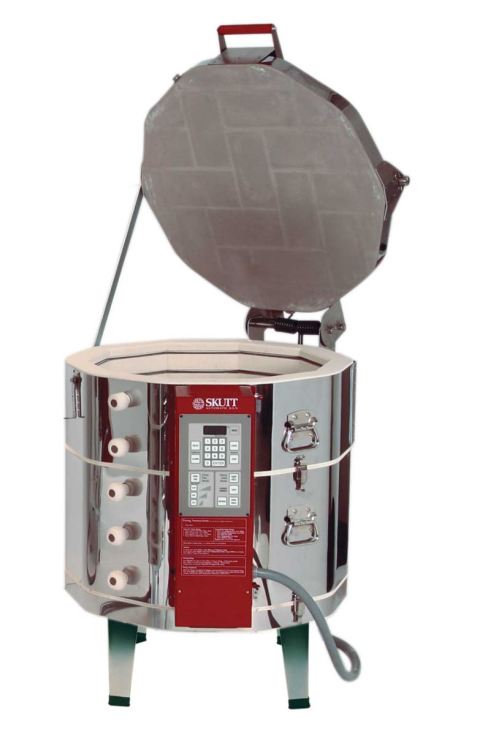
It’s not everyday you buy a new kiln. Most of the time we make do with whatever is at the school, college or studio we’re used to working in, or we’re limited to a hobby kiln or one that we can operate on a small scale. So I’ve been thinking hard about what I want for the Earth Pig studio: what I want the kiln to do and how much ware I intend to make. Of course, I want the thing to fire my pots, but what kind of clay will I be using and what kind of glazes? I’ve spent quite a while trawling through manufacturer’s websites trying to find the right one.
I’ll be using both earthenware and stoneware clays, and some of the glazes I use will need to be fired right the way up to cone 10. I don’t want to be packing the thing every day so something big enough to do a bisque firing and a glaze firing once, maybe twice a week, will be necessary. A kiln with a chamber of at least 90 litres is probably about right; enough to cater for the firing needs of the gallery, but with enough room to fire the work of students’ attending classes. In the end I’ve settled for a model from Cromartie of Stoke-on-Trent, made under license by Skutt in the USA, with a firing capacity of 160 litres. I’m limited to an electric kiln because of where the studio is situated, there’s no gas supply there so, sadly, reduction firing is an impossibility. Yes, I could have a gas kiln fuelled by bottled gas but the nature of the premises, not to mention insurance restrictions, preclude that. On the other hand, a kiln powered by electricity means I can opt for a controller which, among other things, has a feature that calculates the cost of firing.
It’s been an exciting process researching the kiln and other equipment I’ll need for the studio and, for once, not have to worry (at least, not too much!) about the cost.
